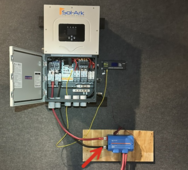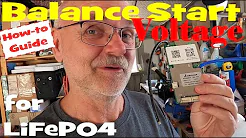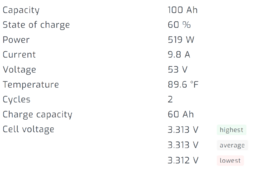BarracudaBob
Harvesting free photons from clean fusion
This is a recurring subject. I had similar issues when I did the full 56.2/54V settings. One battery would go into protection on one cell and get out of balanced with the others.

 diysolarforum.com
diysolarforum.com
I recently tried a setting recommended by the link below.
3.45V x 16 = 55.2V absorption/bulk
3.35V x 16 = 53.6V Float
LifePower4 manual suggest 56.2 & 54.0
Other Posts match your numbers for being conservative.
BULK/ADSORB 3.45-3.52 (3.485 Ave) = 55.8 (16 Cell) 55.2V to 56.32Vmax
FLOAT 3.35 = 53.6 (16 Cell)

 diysolarforum.com
diysolarforum.com
Nothing is going into protection and they are staying within 3%. I can see doing a little maintenance every now and them bringing them up to a higher voltage. It is a safe experiment to give it a try.

EG4 batteries not charging to 100%
SOC meter is now reset. I would hold it there for a day or so.
I recently tried a setting recommended by the link below.
3.45V x 16 = 55.2V absorption/bulk
3.35V x 16 = 53.6V Float
LifePower4 manual suggest 56.2 & 54.0
Other Posts match your numbers for being conservative.
BULK/ADSORB 3.45-3.52 (3.485 Ave) = 55.8 (16 Cell) 55.2V to 56.32Vmax
FLOAT 3.35 = 53.6 (16 Cell)

SunGoldPower 10kw with EG4 LifePower4 batteries - Closed Loop
I wanted to build a software "Master BMS" which will operate between my six EG4 LifePower4 batteries and my SunGoldPower 10kw inverter. I have discovered that the "Master BMS" in closed loop does not completely control the charge profile used by the inverter. I have spent the last two weeks...
Nothing is going into protection and they are staying within 3%. I can see doing a little maintenance every now and them bringing them up to a higher voltage. It is a safe experiment to give it a try.






